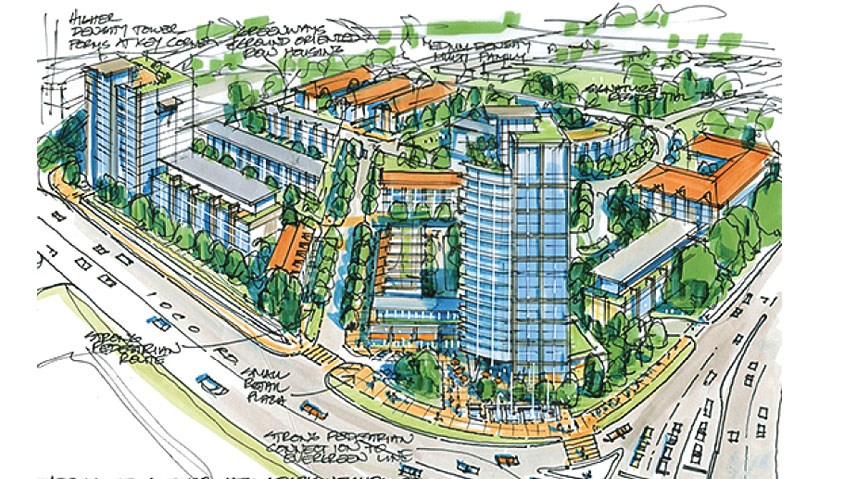Once a multi-company town heavy with industry, the exit of major employers and the arrival of transit is leading to a big transformation of tiny Port Moody, the waterfront terminus of the SkyTrain Evergreen Line extension.
Port Moody’s population of 33,500 would increase by at least 13,000 to 15,000 residents if plans to develop mostly old industrial sites into high-density residential neighbourhoods win approval.
And, so far, the council of Port Moody, which has lost a substantial tax base as industry wound down over the past decade, appears ready for the rapid change.
During a single week in June, the city was handling 30 development applications, 23 of which were in Moody Centre, the SkyTrain’s eastern terminus and where the city is encouraging narrower housing lots. Most developer applications are rezoning bids for higher-density residential.
City council has already voted in favour of giving the first two readings for the Coronation Park redevelopment, which is part of the city’s new official community plan. The land-use concept features a series of highrise residential and mixed-use towers along Barnet Highway, Ioco Road and Guildford Way, with a mix of townhomes and apartments up to the Coquitlam border. It would boost Coronation Park’s population from about 500 today to nearly 4,500 if developers get on board.
At a public hearing on Coronation Park, one of many noisy development meetings now taking place in the city, Port Moody Mayor Mike Clay perhaps summed up the feeling of most council members and residents.
“The general feeling is we need to move something forward, and this is a good starting point,” Clay said.
In March, Port Moody’s planning advisory committee supported a proposal for the former Andres Wines site that would rezone the industrial land into a high-density, mixed-use residential neighbourhood. The Westport Village bid by Andrew Peller Ltd. (Andres Wines) proposes a 32-storey condo tower, a 21-storey condo tower, several mid-rise buildings and a hotel as the densest development in central Port Moody.
Further back on the burner, but still active, is a proposed massive redevelopment of a former 34-acre sawmill industrial site on the Port Moody waterfront. The Flavelle Oceanfront Development, by AP Group, calls for 11 residential towers from 19 storeys to 38 storeys high, with some low-rise residential, light industrial and retail. In all, the project would have more than 3,300 homes and about 7,000 residents at build-out.
The Flavelle site is a 15-minute walk to the SkyTrain station, but it has a long road ahead, since environmental agencies, federal fisheries and Metro Vancouver all need to sign off on it. Port Moody council has already given tentative approval. Surrey-based AP Group bought the Mill and Timber sawmill site in 2000 as Aspen Enterprises.
Not yet approved and deep into the planning and consultation process is a large residential subdivision proposed for the 232-acre former Imperial Oil lands in Port Moody (83 acres) and neighbouring Anmore (150 acres). China-backed and Vancouver-based Brilliant Circle Group bought the land from Imperial in 2015 and has hired an architectural team led by Peter Busby of Perkins+Wills to map out a mixed-use, high-end residential enclave.
On the horizon is the site of BC Hydro’s Burrard Thermal plant on the Port Moody waterfront. BC Hydro will close the power plant this year, which means a $1.3 million tax loss to Port Moody coffers.
In May, Port Moody council passed a tax rate bylaw and financial plan and pointed out that 3.7 per cent of the residential property tax hike was due to the loss of taxes from BC Hydro for the power generating plant.

.png;w=120;h=80;mode=crop)

